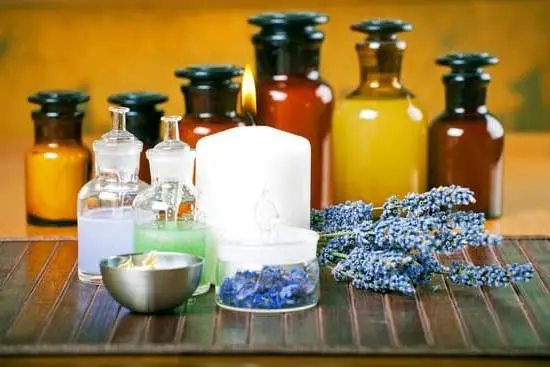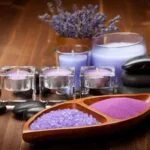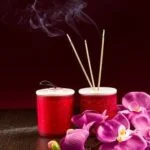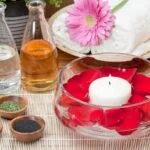Aromatherapy has been used for centuries as a holistic approach to health and wellness, harnessing the power of essential oils to promote relaxation, reduce stress, and address various physical and emotional ailments. In this article, we will explore the art of creating custom aromatherapy oil blends, providing an in-depth guide on the benefits, properties, and uses of different essential oils.
Whether you are new to aromatherapy or looking to expand your knowledge, this comprehensive resource will equip you with the tools and information needed to create your own unique blends at home.
Understanding the rich history and numerous benefits of aromatherapy is crucial for anyone looking to delve into this ancient practice. From its origins in ancient civilizations to its modern-day applications in holistic medicine, aromatherapy has long been revered for its therapeutic properties. By gaining insight into the history of aromatherapy and its benefits, individuals can better appreciate the potential impact of essential oils on their overall well-being.
As we embark on this journey into the world of aromatherapy oil blends, it is essential to familiarize ourselves with different types of essential oils and their distinct properties. Each essential oil offers a unique set of benefits, ranging from calming effects to relieving pain and boosting mood.
Understanding these individual properties will not only expand your knowledge but also empower you to create customized blends tailored to your specific needs and preferences. Stay tuned as we take a deep dive into the art of blending essential oils in order to unlock their full potential for wellness and relaxation.
Understanding Aromatherapy Oils
Aromatherapy oils have been used for centuries for their therapeutic and wellness benefits. They are derived from various plant sources and each type of essential oil has its own unique properties and benefits. Understanding the different types of essential oils is essential for creating effective aromatherapy blends tailored to specific needs and preferences.
Some popular essential oils used in aromatherapy include lavender, tea tree, eucalyptus, peppermint, and citrus oils such as lemon and orange. Each of these oils has distinct characteristics and therapeutic properties. For example, lavender oil is known for its calming and relaxing effects, making it a popular choice for stress relief and promoting better sleep. On the other hand, eucalyptus oil is often used for respiratory support due to its decongestant properties.
When creating aromatherapy blends, it’s important to consider the individual properties of each essential oil in order to achieve the desired outcome. Whether you’re looking to create a blend for relaxation, mental clarity, or immune support, understanding the properties of different essential oils will allow you to craft blends that are both effective and enjoyable.
| Essential Oil | Properties/Benefits |
|---|---|
| Lavender | Calming, Stress Relief, Sleep Support |
| Eucalyptus | Respiratory Support, Decongestant |
| Peppermint | Mental Clarity, Energy Boost |
| Citrus Oils (Lemon/Orange) | Mood Enhancement, Immune Support |
Understanding the individual properties of essential oils also helps in creating well-balanced blends that offer a combination of benefits. When blending different types of essential oils together, it’s important to consider how they complement each other in terms of aroma as well as their therapeutic effects on the body and mind.
By understanding the properties and benefits of various essential oils commonly used in aromatherapy, you can make informed decisions when choosing which oils to use in your custom blends based on your personal preferences and wellness goals. This knowledge is crucial for creating effective aromatherapy oil blends that cater to specific needs such as relaxation, stress relief, or even physical ailments like headaches or muscle tension.
The Art of Blending
When it comes to creating aromatherapy oil blends, the art of blending is a crucial aspect. Understanding how different essential oils complement each other and knowing the right proportions to use can make a significant difference in the effectiveness of the blend.
The key to successful blending lies in combining essential oils that not only smell good together but also offer complementary therapeutic properties. It’s important to start with a clear intention for the blend, whether it’s relaxation, mental clarity, or physical wellness, as this will guide your selection of oils.
To create a well-balanced aromatherapy oil blend, it’s essential to understand the top, middle, and base notes in essential oils. Each oil falls into one of these categories based on its aroma longevity and evaporation rate.
For example, citrus oils like lemon and bergamot are considered top notes due to their quick evaporation and uplifting scent, while floral oils like lavender and geranium are categorized as middle notes for their balancing and harmonizing fragrance. Base notes such as sandalwood and patchouli have a longer-lasting aroma and grounding properties.
Once you have selected your essential oils based on their aromatic profiles and therapeutic benefits, it’s time to determine the right ratios for blending. A common guideline is to use 30% top note oils, 50% middle note oils, and 20% base note oils. However, these proportions can be adjusted based on personal preference and intended use. Experimenting with different combinations and proportions is an integral part of mastering the art of blending aromatherapy oils.
| Essential Oil Category | Examples |
|---|---|
| Top Notes | Lemon, Bergamot |
| Middle Notes | Lavender, Geranium |
| Base Notes | Sandalwood, Patchouli |
Essential Tools and Equipment
When it comes to making your own aromatherapy oil blends, having the right tools and equipment is essential for a successful and enjoyable blending experience. Here is a detailed look at the must-have items you’ll need in your aromatherapy toolkit:
1. Glass Bottles: These are essential for storing your finished oil blends. It’s important to use dark-colored glass bottles, such as amber or cobalt blue, to protect the oils from exposure to light, which can cause them to degrade.
2. Dropper Caps: When working with essential oils, precision is key. Using dropper caps on your bottles allows for easy and accurate dispensing of the oil blends.
3. Funnel: A small funnel will make it much easier to transfer your essential oils into their storage bottles without making a mess.
4. Carrier Oils: While not exactly a tool or equipment, carrier oils are an important component in aromatherapy blends. Common carrier oils include jojoba, sweet almond, and coconut oil.
5. Labels: Keeping your different oil blends organized is crucial, so be sure to have plenty of labels on hand to clearly mark each bottle with its contents.
Now that you know what tools and equipment you need, let’s dive into how to make aromatherapy oil blends and put these items to good use.
Safety Precautions
When it comes to working with essential oils for aromatherapy purposes, safety should always be a top priority. Essential oils are powerful and concentrated liquids that require careful handling to prevent any adverse reactions or accidents. This section will cover some important safety guidelines and precautions to consider when working with essential oils.
Proper Dilution
One of the most important safety precautions when using essential oils is proper dilution. Essential oils are highly concentrated and can cause skin irritation or other adverse reactions if applied directly to the skin without dilution.
It is crucial to dilute essential oils with a carrier oil, such as jojoba oil or sweet almond oil, before applying them to the skin. The recommended dilution ratio is usually around 2-3% for adults and even lower for children and individuals with sensitive skin.
Patch Testing
Before using a new blend of essential oils on your skin, it’s a good idea to perform a patch test first. Apply a small amount of the diluted blend to a small area of skin, such as the inner forearm, and wait 24 hours to see if any irritation or allergic reaction occurs. This simple step can help prevent more severe skin reactions if you happen to be sensitive or allergic to any of the oils in your blend.
Storage and Handling
Essential oils should be stored properly in dark glass bottles away from direct sunlight and heat to maintain their potency. Additionally, it’s important to handle essential oils with care and avoid contact with eyes, mucous membranes, or open wounds. Always use caution when pouring or transferring essential oils to minimize the risk of spills or splashes.
By following these safety precautions and guidelines, you can enjoy the benefits of aromatherapy while minimizing potential risks or adverse effects associated with working with essential oils. Remember that each individual may react differently to specific essential oils, so it’s crucial to pay attention to how your body responds when using new blends for the first time.
Step-by-Step Guide to Making Aromatherapy Oil Blends
Aromatherapy oils have been used for centuries to promote relaxation, improve mood, and address a variety of physical and emotional issues. Creating your own aromatherapy oil blends at home can be a rewarding and cost-effective way to harness the benefits of essential oils.
Whether you’re looking to relieve stress, boost energy, or simply enjoy a pleasant scent, learning how to make aromatherapy oil blends is a valuable skill. Here’s a step-by-step guide to get you started:
Step 1: Gather Your Supplies
Before you begin blending your essential oils, it’s important to gather all the necessary supplies. You’ll need a collection of essential oils, carrier oils such as jojoba or sweet almond oil, glass bottles for storage, and measuring tools such as droppers or pipettes.
Step 2: Understand Essential Oil Notes
Essential oils are typically classified into three categories based on their aroma intensity and volatility: top notes, middle notes, and base notes. Understanding these notes is crucial when creating well-balanced aromatherapy blends. Top notes are the first scents you perceive in a blend and provide freshness and lightness. Middle notes form the heart of the blend with their balancing properties, while base notes are rich and grounding, adding depth and longevity to the aroma.
Step 3: Mixing Your Oils
Once you have selected your essential oils based on their individual properties and desired benefits, it’s time to start mixing. A general rule of thumb is to use 30% top note oils, 50% middle note oils, and 20% base note oils in your blend.
However, these ratios can vary depending on personal preference and the intended use of the blend. To create your own signature scent or address specific concerns like sleep or stress relief, experiment with different combinations until you find what works best for you.
By following these steps for making aromatherapy oil blends at home, you can personalize your wellness routine with unique scents that cater to your specific needs. Whether you’re looking for an energizing morning blend or a calming evening blend, creating custom oil blends allows you to tailor aromatherapy to fit seamlessly into your lifestyle.
Recipes for Common Ailments
Stress-Relief Blend
One common issue that many people seek to address with aromatherapy oil blends is stress. A blend that can help relieve stress and promote relaxation typically includes essential oils such as lavender, chamomile, and bergamot. Lavender oil is known for its calming properties, while chamomile is often used to soothe anxiety.
Bergamot, on the other hand, has uplifting and mood-boosting effects. To create a stress-relief blend, simply combine a few drops of each of these essential oils with a carrier oil such as sweet almond or jojoba oil in a dark glass bottle.
Anxiety-Reducing Blend
For those dealing with anxiety, an aromatherapy oil blend containing oils like ylang-ylang, clary sage, and frankincense can be beneficial. Ylang-ylang is believed to have sedative effects and can help calm the mind and body.
Clary sage has been used for its anti-anxiety properties, while frankincense is known for its ability to induce feelings of peace and relaxation. Mixing these essential oils in the right proportions with a carrier oil can result in an effective anxiety-reducing blend.
Headache Relief Blend
Headaches are another common ailment that can be alleviated through the use of aromatherapy oil blends. Peppermint oil is often recommended for its ability to ease headaches and migraines due to its cooling sensation and analgesic properties. Eucalyptus and rosemary are also known for their headache-relieving benefits. Combining these oils into a blend with a suitable carrier oil can provide relief from headaches when applied topically or used in a diffuser.
By understanding the properties of various essential oils and how they work together, you can create customized aromatherapy blends tailored to address specific health concerns like stress, anxiety, and headaches.
Creative Uses for Aromatherapy Oil Blends
In conclusion, learning how to make aromatherapy oil blends can open up a world of possibilities for enhancing wellness and relaxation in your daily life. The art of blending essential oils allows you to create unique and effective combinations tailored to your specific needs and preferences. By understanding the properties and benefits of different types of essential oils, you can harness their therapeutic potential to address common ailments such as stress, anxiety, and headaches.
One of the most exciting aspects of creating your own aromatherapy oil blends is exploring the creative uses for them in your daily life. From adding a few drops to a warm bath or using them in a massage oil, to diffusing them in a room or creating customized sprays, there are countless innovative and practical ways to incorporate your custom oil blends into your self-care routine.
This not only allows you to enjoy the maximum benefit of your blends but also adds an element of personalized indulgence to your everyday activities.
With the proper tools, equipment, and safety precautions in place, making aromatherapy oil blends at home can be a rewarding and fulfilling experience. Whether you are looking to elevate your mood, promote relaxation, or address specific health concerns, creating your own custom blends gives you the freedom to tailor your aromatherapy experience exactly as you desire. So why not embark on this aromatic journey and start experimenting with different essential oils to discover the endless possibilities of aromatherapy oil blending?
Frequently Asked Questions
What Essential Oil Blends Well Together?
Essential oils that blend well together are lavender and bergamot, which create a soothing and calming blend. Another good combination is peppermint and eucalyptus, known for their refreshing and invigorating aroma. Additionally, lemon and rosemary make a great pairing for a fresh and uplifting scent.
What Essential Oils Cannot Be Mixed Together?
Some essential oils should not be mixed together due to their chemical composition or potential interactions. For example, citrus oils like lemon or grapefruit should not be mixed with cedarwood or frankincense. Additionally, it’s best to avoid blending cinnamon or clove with more delicate oils like chamomile or lavender.
What Is the Best Carrier Oil to Mix With Essential Oils?
The best carrier oil to mix with essential oils depends on the intended use. For massage blends, jojoba oil is an excellent choice because it closely resembles the skin’s natural sebum.
For skincare formulations, sweet almond oil is popular due to its nourishing properties. Coconut oil is also a versatile carrier oil suitable for various applications such as hair care or DIY beauty products.

Are you looking for a natural way to improve your health and wellbeing?
If so, aromatherapy may be the answer for you.






